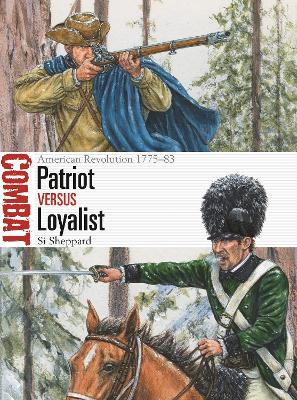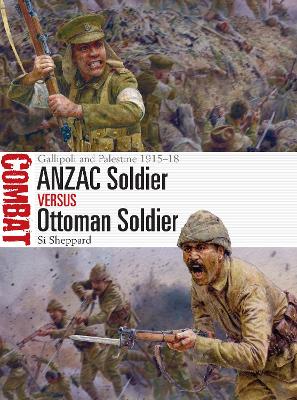Combat
3 total works
In 53 BC, Roman and Parthian forces collided in a confrontation that would reshape the geopolitical map and establish a frontier between East and West that would endure for the next 700 years. From the initial clash at Carrhae through to the battle of Nisibis more than 250 years later, Roman and Parthian forces fought a series of bloody campaigns for mastery of the Fertile Crescent.
As Roman forces thrust ever deeper into the East, they encountered a civilization unlike any they had crossed swords with before. Originating in the steppes of Central Asia, the Parthians ruled a federated state stretching from the Euphrates to the Indus. Although Rome’s legions were masters of the battlefield in the Mediterranean, the Parthians refused to fight by the rules as Rome understood them. Harnessing the power of the composite bow and their superior manoeuvrability, the Parthians’ mode of warfare focused exclusively on the horse. They inflicted a bloody defeat on the legions at Carrhae and launched their own invasion of Roman territory, countered only with great difficulty by Rome’s surviving forces. The Parthians were eventually thrown out, but neither side could sustain a permanent ascendancy over the other and the conflict continued.
Packed with stunning artwork, including battlescenes, maps and photographs, this title examines the conflict through the lens of three key battles, revealing a clash between two armies alien to each other not only in culture but also in their radical approaches to warfare.
As Roman forces thrust ever deeper into the East, they encountered a civilization unlike any they had crossed swords with before. Originating in the steppes of Central Asia, the Parthians ruled a federated state stretching from the Euphrates to the Indus. Although Rome’s legions were masters of the battlefield in the Mediterranean, the Parthians refused to fight by the rules as Rome understood them. Harnessing the power of the composite bow and their superior manoeuvrability, the Parthians’ mode of warfare focused exclusively on the horse. They inflicted a bloody defeat on the legions at Carrhae and launched their own invasion of Roman territory, countered only with great difficulty by Rome’s surviving forces. The Parthians were eventually thrown out, but neither side could sustain a permanent ascendancy over the other and the conflict continued.
Packed with stunning artwork, including battlescenes, maps and photographs, this title examines the conflict through the lens of three key battles, revealing a clash between two armies alien to each other not only in culture but also in their radical approaches to warfare.
In 1915–18, ANZAC and Ottoman soldiers clashed on numerous battlefields, from Gallipoli to Jerusalem. This illustrated study investigates the two sides’ fighting men.
The Gallipoli campaign of 1915–16 pitched the Australian and New Zealand volunteers known as the ANZACs into a series of desperate battles with the Ottoman soldiers defending their homeland. In August 1915, the bitter struggle for the high ground known as Chunuk Bair saw the peak change hands as the Allies sought to overcome the stalemate that set in following the landings in April. The ANZACs also played a key part in the battle of Lone Pine, intended to divert Ottoman attention away from the bid to seize Chunuk Bair.
The Gallipoli campaign ended in Allied evacuation in the opening days of 1916. Thereafter, many ANZAC units remained in the Middle East and played a decisive role in the Allies’ hard-fought advance through Palestine that finally forced the Turks to the peace table. The fateful battle of Beersheba in October 1917 pitted Australian mounted infantry against Ottoman foot soldiers as the Allies moved on Jerusalem.
In this book, noted military historian Si Sheppard examines the fighting men on both sides who fought at Lone Pine, Chunuk Bair and Beersheba. The authoritative text is supported by specially commissioned artwork and mapping plus carefully chosen archive photographs.
The Gallipoli campaign of 1915–16 pitched the Australian and New Zealand volunteers known as the ANZACs into a series of desperate battles with the Ottoman soldiers defending their homeland. In August 1915, the bitter struggle for the high ground known as Chunuk Bair saw the peak change hands as the Allies sought to overcome the stalemate that set in following the landings in April. The ANZACs also played a key part in the battle of Lone Pine, intended to divert Ottoman attention away from the bid to seize Chunuk Bair.
The Gallipoli campaign ended in Allied evacuation in the opening days of 1916. Thereafter, many ANZAC units remained in the Middle East and played a decisive role in the Allies’ hard-fought advance through Palestine that finally forced the Turks to the peace table. The fateful battle of Beersheba in October 1917 pitted Australian mounted infantry against Ottoman foot soldiers as the Allies moved on Jerusalem.
In this book, noted military historian Si Sheppard examines the fighting men on both sides who fought at Lone Pine, Chunuk Bair and Beersheba. The authoritative text is supported by specially commissioned artwork and mapping plus carefully chosen archive photographs.


